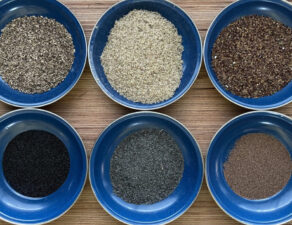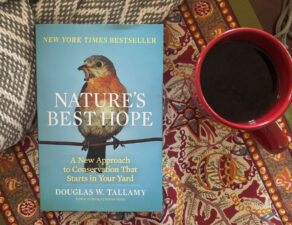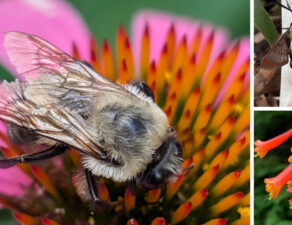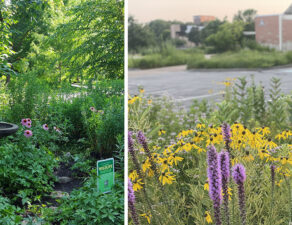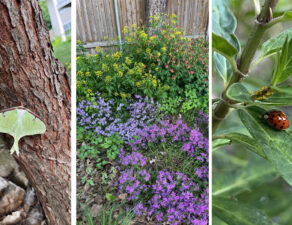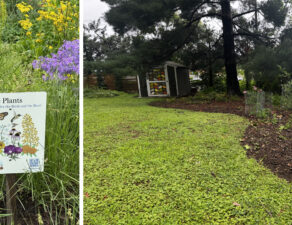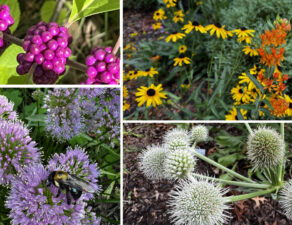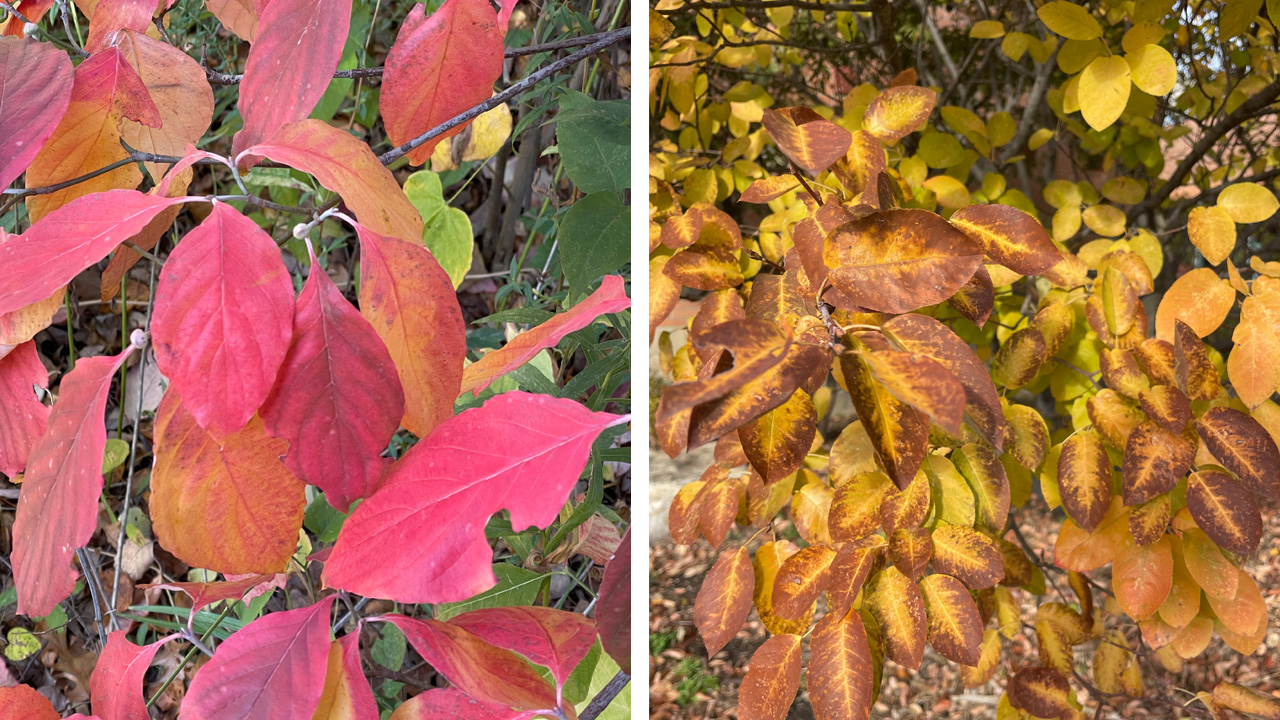
Pictured: Left: Flowering dogwood (Cornus florida) Right: Juneberry (Amalanchier canadensis)
Photo Credit: Cydney Ross
Written by Cydney Ross, Outdoor Education Manager
As sunlight shifts and temps drop, trees prepare for winter by slowing down their metabolism to conserve energy. Leaves shed to preserve water for the cold months ahead. Conventional lawnscaping practices suggest you rake and bag those leaves or chop them up into mulch. This leaves a lot to be desired when it comes to maintaining a healthy ecosystem.
Trees don’t lose their leaves for nothing. Besides conserving resources, decomposed leaves put nutrients back in the soil and feed microorganisms. This supports the health of the tree that dropped them and other understory species that are reliant. Of course, it takes time for plant material to breakdown into healthy soil. Invertebrates, fungi, and bacteria all play their part in this process. Fallen leaves and sticks are used for overwintering habitat. Giant Luna moths (Actias luna) slumber in silken cocoons that resemble dead leaves. Birds sift through leaf litter seeking food and nesting material. Small mammals and reptiles use it for hiding spots and camouflage. As you can see there is life in the litter, but folks wonder where exactly leaves should be left in their yards.
Considering habitat type is crucial for seasonal maintenance practices. Native woodland plants have adapted to receive cover from fallen leaves. Come spring, plants are pushing through without issue. This has been an ongoing system of checks and balances which has worked for millennia. It has been only in the last 400 years when the lawn was created as a status symbol for the wealthy elite in Europe that it was decided faded plant material is “bad.” This antiquated practice needs a reality check. Keep leaves beneath trees, shrubs, and on shadier garden beds. Our woodland plants and wildlife will thank you. Sun-loving species on the other hand have different needs.
At the Anita B. Gorman Discovery Center, we observe that prairie and glade plants prefer very light cover. As an experiment we left the cut plant material from Little bluestem (Schizachyrium scoparium) where it laid. The following spring, we found the grass with excess thatch was distressed or died from crown rot. Grazing wildlife, fires, and plant competition are a few ways our landscapes naturally find balance. In a public garden where looks are valued alongside wildlife benefit, it’s up to us to learn about each plant and choose practices that fit our goals.
As a rule of thumb, if we get 2” or more of leaf cover on full-sun species, we’re inclined to move the leaves to shadier areas. We do not chop these leaves up into fine mulch. Yes, doing this can provide nutrients to the soil. It also rids the leaf litter of the insects our birds, amphibians, and reptiles need to survive. You may notice certain leaves break down slower than others. Oak (Quercus sp.) and Sycamore (Platanus sp.) leaves are sturdier and take more time compared to Maple (Acer sp.) and Hackberry (Celtis sp.). Heavy leaf-fall will kill turf grass. Use it to your advantage to prep the ground for soft landings around your trees or pollinator gardens throughout your landscape.
Garden maintenance starts with understanding your plants and their needs. This sounds like a tall order, but it all begins with your getting outdoors. Who knew something as simple as fallen leaves could have such an impact on our wildlife? With this I hope you consider your gardening practices and see if they align with your goals. From there the possibilities (and fun) are endless.
